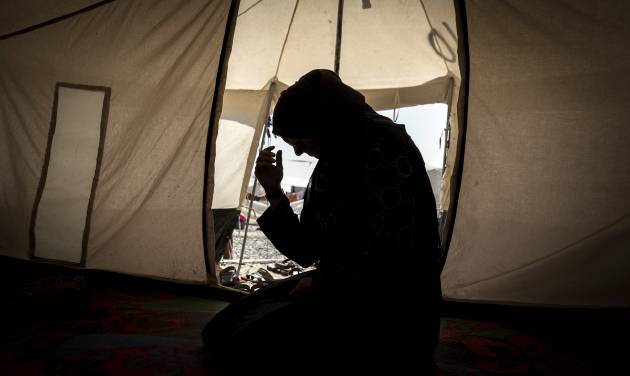Around 1.8 million internally displaced persons in Iraq — UN

This photo released by Amnesty International on Tuesday, April 17, 2018 shows 33-year-old mother of six, Zahra, inside her tent in Salamiya camp for internally displaced people where she and her family have lived for 7 months. Originally from Shwra, south of Mosul, the family moved to Mosul three years ago after Zahra’s husband joined ISIS, working with the group as a cook. He was killed by an airstrike in June 2017. Amnesty says its report details the predicament of thousands of female-led families left to fend for themselves in displaced camps after male family members were killed, arbitrarily arrested or forcibly disappeared. (Claire Thomas/ Amnesty International via AP)

Baghdad (IraqiNews.com) – Approximately 1.8 million people are estimated to be internally displaced persons in Iraq, equating to 18 percent of the Iraqis who live in conflict-affected areas, and more than 5 percent of the overall population.
According to an assessment carried out in 2018 by the UN Mine Action Service (UNMAS), 22% of the internally displaced persons in camps cite explosive hazards as a main reason for not intending to return to their areas of origin, rising up to 52% in some governorates.
In addition, 12% of out-of-camp internally displaced persons cite the same.
UNMAS Iraq, working in tandem with its implementing partners, continues to maintain a weighted presence in Iraq, especially in the areas liberated from the Islamic State (IS).
Through strategic partnerships and engagement of both internal and external stakeholders, UNMAS has so far cleared over 1,100 sites of critical infrastructure. These include bridges, water plants, power plants, hospitals, schools, etc. that were once the strongholds of IS and which were littered with explosive hazards after their defeat.
